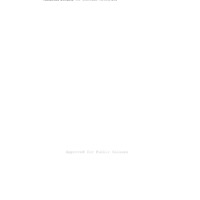-
Title
-
Pathology and Toxicology of Repeated Doses of Hydrazine and 1,1-Dimethylhydrazine in Monkeys and Rats
-
Date
-
1964
-
Index Abstract
-
Not Available
-
Photo Quality
-
Complete
-
Report Number
-
AMRL TDR 64-43
-
Creator
-
Patrick, Roman L.
-
Back, Kenneth C.
-
Corporate Author
-
Biomedical Laboratory
-
Laboratory
-
Biomedical Laboratory
-
Extent
-
18
-
Identifier
-
AD0604525
-
Access Rights
-
OTS
-
Distribution Classification
-
1
-
Contract
-
Laboratory Research - No Contract
-
DoD Project
-
6302
-
DoD Task
-
630201
-
DTIC Record Exists
-
Yes
-
Distribution Change Authority Correspondence
-
None
-
Distribution Conflict
-
No
-
Cover Price
-
0.5
-
Abstract
-
Twelve rhesus monkeys received daily doses of hydrazine ranging from 5 to 20 mg/kg and totaling from 4 to 20 injections. Seven monkeys received 20 injections of 1, 1-dimethylhydrazine at 10 mg/kg. All animals lost weight during the experiment. In the hydrazine-treated group of monkeys, serum glutamic oxaloacetic transaminase and bilirubin rose with doses of 20 mg/kg, with more than a twentyfold increase of SGOT in two animals. Most of those receiving 20 mg/kg exhibited loss of appetite, vomiting, lethargy, and severe weakness. Microscopic examination revealed lipid accumulation in the liver, myocardium, kidney, and skeletal muscle. Massive liver necrosis was observed in one animal. In those monkeys receiving UDMH, blood glucose rose significantly toward the end of the experiment. Some lipid was deposited in the heart, liver, and kidney, but to a much lesser degree than was observed with hydrazine, and it could only be demonstrated with special fat stain. Rats given from 3 to 23 doses of 10 or 20 mg/kg/day hydrazine did not show marked fatty changes as observed in the monkeys.
-
Report Availability
-
Full text available
-
Date Issued
-
1964-06
-
Provenance
-
RAF Centre of Aviation Medicine
-
Type
-
report
-
Format
-
1 online resource
 AMRLTDR64-043.pdf
AMRLTDR64-043.pdf